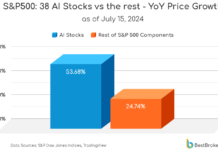
The global Virtual Reality Market is forecasted to progress at a high-value CAGR of 26% to reach a value of US$ 233.79 billion by 2033, reveals Fact.MR, a market research and competitive intelligence provider.
The global virtual reality (VR) business is booming, revolutionizing how people engage with technology and pushing the boundaries of innovation. The virtual reality market is expected to grow significantly in the following years, reaching new heights in terms of acceptance across numerous industries.
Key Segments of Virtual Reality Industry Research Report
Virtual reality is becoming more prevalent in the gaming and entertainment industries, providing consumers with an unsurpassed immersive experience. Businesses are embracing virtual reality (VR) for training, simulation, and collaboration, which is changing the way employees interact and learn. VR is revolutionizing healthcare and education by allowing realistic simulations and engaging learning experiences.
VR is reaching new heights of realism and engagement owing to ongoing advances in technology and software. The VR market is varied, with a wide range of competitors, from industry titans like Oculus and HTC to new startups fueling competition and innovation. VR headsets are becoming more affordable and accessible to the general public, widening the user base.
Key Takeaways from Market Study
- The global virtual reality market was valued at US$ 18.4 billion in 2022.
- Worldwide demand for virtual reality is projected to be valued at US$ 23.18 billion in 2023.
- The global market is projected to reach US$ 233.79 billion by the end of 2033.
- The virtual reality market is predicted to rise at a CAGR of 26% from 2023 to 2033.
- The healthcare segment is predicted to advance at 31.5% CAGR through 2033.
- The market in Europe is set to advance at 29% CAGR over the forecast period (2023 to 2033).
- The commercial segment accounted for 55.3% share of the market in 2022.
- Asia Pacific held 40% share of the global market in 2022.
- The gesture-tracking devices segment is projected to increase at a 29.5% CAGR from 2023 to 2033.
- The semi- & full-immersive segment accounted for 82.9% of the market in 2022 and is anticipated to continue to expand at a CAGR of 28% over the forecast period.
- The non-immersive segment accounted for a revenue share of 16.8% in 2022.
- The hardware segment accounted for a revenue share of 66.5% in 2022.
“The virtual reality market is expanding due to its diverse applications, affordability, and growing demand for immersive experiences. As technology progresses, VR is poised to reshape our daily lives, workplaces, and entertainment. The future of virtual reality holds immense potential, erasing the boundaries between reality and the virtual realm, opening up several opportunities for individuals and businesses,” says a Fact.MR analyst.
Critical Role of Virtual Reality in Generating Immersive Experiences and Simulations Transforming Industries
The extraordinary adaptability of VR is one of the most important aspects driving market growth. VR has become synonymous with immersive experiences, engulfing users in 360-degree landscapes and interactive storytelling in the entertainment industry. The gaming sector provides gamers with an unsurpassed level of immersion. From traversing imaginative locations to experiencing heart-pounding adventures, virtual reality has altered the gaming scene.
Businesses are increasingly using VR for training, simulations, and collaboration. VR enables remote communication, bridging geographical distances and allowing teams to collaborate as if they were in the same room. Following the COVID-19 pandemic, virtual reality developed as an important tool for remote work and virtual conferences.
Education is undergoing a metamorphosis, with the incorporation of VR. VR is being used in educational institutions to build engaging and dynamic learning experiences that attract students and promote greater knowledge of challenging subjects. VR is also being used in the industrial and manufacturing sectors for design, prototyping, and safety training. Architects and engineers utilize virtual reality to conceptualize and revise ideas in three dimensions, while industrial workers receive safety instruction in realistic virtual settings, which helps reduce workplace accidents. VR is transforming property tours in the real estate industry by providing virtual walkthroughs, allowing potential buyers or tenants to experience properties from the comfort of their own homes.
Competitive Landscape
The competitive landscape of the market is defined by a diversified mix of established industry giants and start-ups, all competing for supremacy in this quickly expanding field. Leading the push are top companies in the virtual reality market such as Meta Platforms (previously Facebook), HTC, and Sony, which have solidified their positions through a mix of cutting-edge technology and expansive content ecosystems. These firms continue to push the boundaries of virtual reality technology, establishing new standards for immersive experiences.
As the demand for immersive experiences grows across industries, the competitive landscape is projected to develop further, creating enough opportunity for established firms as well as ambitious entrepreneurs to determine the future of VR technology.
- HTC teamed with Holoride, an in-car VR entertainment company, in March 2022 to expand its AR and VR hardware product range.
- Sony stated in January 2022 that it was creating a PSVR headset for a better virtual reality experience on PlayStation since it will be directly connected to the PlayStation 5 system.
- Oculus teamed with Zoom, a video conferencing firm, to work toward enabling virtual reality meetings and give a virtual workroom atmosphere with whiteboards for more comfortable and interactive meeting sessions in September 2021.
These insights are based on a report on Virtual Reality Marketby Fact.MR.

















